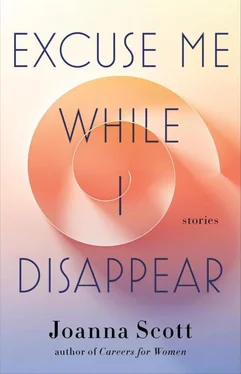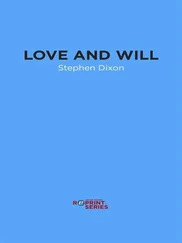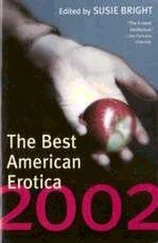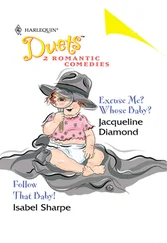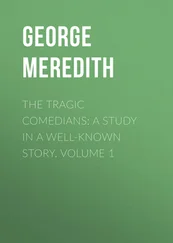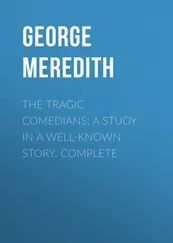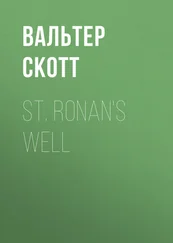For a moment I thought I heard the sound of a train easing to a stop, but it was just the flames on the huge stove licking at the bottom of the vat.
“My brother is right, of course. I am guilty of being old-fashioned. So I learned to make my own books in the old-fashioned way.
“For six months,” he reminisced, “I lived in a monastery built on a hillside overlooking the River Sorgue. I slept in a stone cell on a thin mattress. I ate a sour bread made by the monks and drank the water from a natural spring so deep that no diver has ever succeeded in reaching its bottom. It was a hard life, but there must have been something magical in that water. I am sure I grew younger in those months. I learned how to make paper from a monk named Brother Jean. When I came home, I purchased an antique mill-board machine and set it up in my basement. I sharpened the blade, recalibrated the gauges, tightened the screws on the treadle, and then sent out calls. That’s when I met Leslie Klavan. Maybe you’ve heard of him? That’s Klavan with a K.”
I scribbled nonsense in my notebook, faking an attempt to write the name correctly. Klavan with a K. Who? You’re not talking about that writer who is so obscure that his Wikipedia page was deleted when he was deemed to be the fictitious creation of a bot? Not the author of the rarest of rare books that most book dealers have concluded never really existed in the first place, but if it did exist would be coveted by collectors around the world? Not the man who, as I recently learned, had been Terence Farley’s lover?
Leslie Klavan with a K? Never heard of him, I communicated with a shake of my head.
“This is the Baskerville method I’m using, by the way,” he said. I had not traveled twelve hundred miles to learn about the history of papermaking, but Terence Farley continued anyway. “John Baskerville was an English printer in the eighteenth century. He’d been trained as a headstone engraver and went on to found a successful varnishing business. He used his wealth to pursue his other passions, including papermaking. In collaboration with a friend, he developed a process that could produce smooth, wove paper using a fine wire mesh. Because the world too often fails to appreciate ingenuity, John Baskerville died penniless and was buried in a pauper’s grave. He, the headstone carver, had no headstone. Yet here’s the thing about John Baskerville: he may not have had wealth, but he had friends, and one friend stole his body from the grave and replanted it in a church vault, below a stone plaque inscribed with his name—though I’m not sure what all that has to do with anything.”
He was searching my face again, looking for a reaction. “Oh,” I said.
“ His body lies a-mouldering, ” he sang. “At any rate, his method survived him.”
“And now you’re using it.”
“Making paper with wove paper from cast-off clothing. No tree has to give up its life for our sake. For thirty years, my job was to produce the paper used by Les for his book. In the end, I also cut the pages for his book, and bound it by hand. If you want to tell my story, you need to include Leslie Klavan.”
Oh, sure, I intended to include him. My future depended on Leslie Klavan and his precious book.
“Is he still alive?” I asked gingerly, though I already knew the answer.
“Long dead. He worked as a grade-school tutor in New Britain and wrote his book in the evening. We became lovers. Then, after the accident…”
He drifted into silence without finishing the sentence. At first I thought he was so busy stirring the contents of the vat that he’d lost track of the thread of his story. As I watched him, though, I began to sense that he was waiting for something. He was waiting, I guessed, for my reply.
“What accident?”
I was fortunate that I’d found in Terence Farley a man willing to trust me. While he derived sheets of paper from factory shop coats, he went on to tell me about the drunk driver who drove the wrong way on the interstate and hit Leslie Klavan’s car head-on. And he told me much more.
Over the course of the hour, he confirmed the rumor that only one copy of Klavan’s book had ever been made. He also confirmed the story I’d heard that a prominent public figure who insisted on keeping his identity secret had bought the book, and then returned it after reading the first page. And he communicated another fact that I already knew: Absolute Zero was the title of Klavan’s book.
I was rattled by the sound of the words when Terence Farley spoke them aloud. Absolute Zero. I aimed to make my fortune with those words, and with Terence Farley’s help. But had he seen through me? Was he leading me on, batting me about between his paws, pretending that he didn’t know what I was after, while I pretended to know nothing about that rarest of rare books?
In a lame attempt to show my ignorance, I tried to clarify the spelling of the title—“A-B-S—”
He interrupted. “I can’t begin to describe the book. You’ll have to read it yourself. It takes time, I warn you. It’s a long book, necessarily so, given its scope, but it’s worth the effort. There’s the scene when the little girl named Jackie breaks into the hardware store in the dead of night. What a scene. And Harry Le Mont riding alone on a tandem bicycle around and around the old tarmac of the abandoned airport…”
His voice trailed off again. I forced out a cough into my cupped hand. In the most casual voice I could muster, I asked where I might find the one extant copy of Leslie Klavan’s book.
“If only anyone knew!”
Terence Farley apologized for not being of more help to me. Turning off the burner beneath the vat, he said, “Les would have appreciated your interest.”
After spending over an hour with Terence Farley, I gingerly asked him my final question: By any chance, did he have Leslie Klavan’s original manuscript?
“Not even a page of it,” he announced, suddenly cheerful.
I couldn’t hide my frustration. “You made a book that was supposed to last, a book that was meant to be read by future generations. You didn’t even save the manuscript?”
He shrugged. As I closed my notebook, he unclipped a sheet of paper from one of the ropes and handed it to me. “Here’s a start. Maybe it will help you find what you’re looking for.” He gave a courtly bow.
I thanked him for the piece of paper, and for his time. I lied and promised to send him my article when it was finished. I bet he’d already guessed that I wasn’t writing any article.
Back in my car, I headed up Monument Road, but instead of continuing toward Route 6 and home, I turned down Pochet Road and followed it all the way to the end. I parked and made my way along a path strewn with reeds that had been broken and blown about by the winter storms. I climbed up the rise of the dune. It had stopped drizzling, and on the other side stretched the ocean, the waves breaking in rapid succession, leaving a line of creamy froth on the shore.
I descended the dune to the beach, slipping sideways down the wet sand. The wind was stronger closer to the water. I enjoyed the feeling of my hair whipping about and the light sting of sand on my cheeks. Offshore, a trio of black-and-gray puffins bobbing like corks would have been indistinguishable from the water without their fiery plump beaks. Further out, I caught sight of the brown head of a seal. Along the edge of the surf, a single tern chased the waves, leaving a line of tiny tracks in the wet sand.
Many years earlier, I’d come on a school trip to Cape Cod, and our class had stopped somewhere near this beach at a small telegraph museum. We learned about Le Direct, a 3,200-mile-long marine cable that had been laid in the nineteenth century, connecting France to the United States. In one of the displays was a card marked with dashes and points that had been embossed by the stylus of the telegraph machine. We were told that it was a copy of the message from France announcing that Charles Lindbergh had landed safely after his flight across the Atlantic.
Читать дальше
